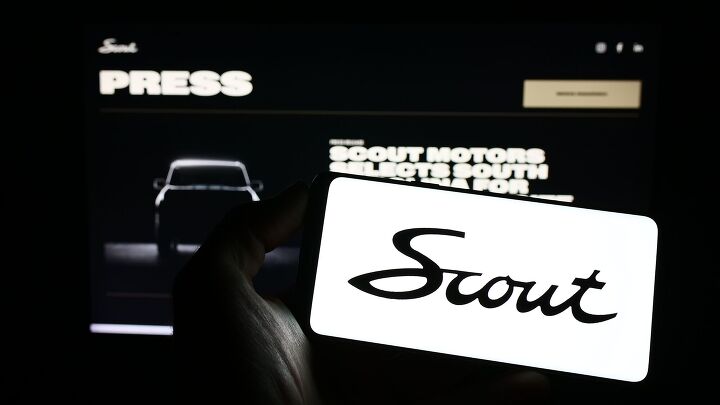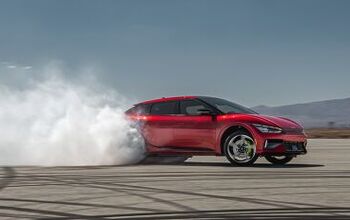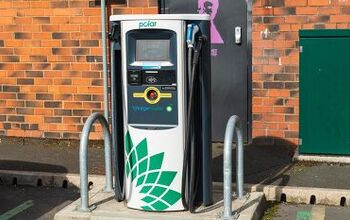Dealer Groups are Up In Arms About Potential for Scout and Sony Afeela to Sell Cars Directly to Buyers

Dealers are often the first group to sound concerns when something changes in the auto industry, whether they’re justified in their complaints or not. Most recently, a state dealer association created an ad asking Volkswagen Group and Sony Honda Mobility not to sell their upcoming EVs outside of the existing dealer network over concerns the new divisions could follow Tesla and Rivian in selling directly to buyers.
The group placed an ad in the April 15 issue of Automotive News and has collected support from all 50 state and 21 metro-area dealer associations. They warned that federal and local laws could prohibit selling directly to consumers and said that the groups could pursue legal options if they attempted to do so.
Advocates for the groups have long complained that they’ve received no information from automakers after years of trying.
“After two years of asking and getting nothing, frustration is very high,” one person told Automotive News. “If they want to sell the vehicles direct, it’s going to be an incredibly difficult battle.”
Executives from the automakers have dodged questions about the situation, noting that they wanted to leave their options open as market conditions evolve. At the same time, VW is moving to bring the Cupra brand to the U.S., where it’s currently unclear how they’ll be sold.
While it’s hard to argue against the dealer system for owner support and servicing, it’s also hard to argue against more choices for buyers. Purchasing online or ordering a car can be a vastly better experience than trying to track down a model on a dealer’s lot and then negotiate a price anywhere near MSRP, so it will be interesting to see where the cards fall when the new brands arrive on the market.
[Image: T. Schneider/Shutterstock.com]
Become a TTAC insider. Get the latest news, features, TTAC takes, and everything else that gets to the truth about cars first by subscribing to our newsletter.

Chris grew up in, under, and around cars, but took the long way around to becoming an automotive writer. After a career in technology consulting and a trip through business school, Chris began writing about the automotive industry as a way to reconnect with his passion and get behind the wheel of a new car every week. He focuses on taking complex industry stories and making them digestible by any reader. Just don’t expect him to stay away from high-mileage Porsches.
More by Chris Teague
Latest Car Reviews
Read moreLatest Product Reviews
Read moreRecent Comments
- Wolfwagen I expect Renault to be less popular than Fiat
- ToolGuy Helium-3, baby!
- Roman Our 1999 Pontiac Sunfire Gt is still running without any issues. 25 years and counting.
- 28-Cars-Later I thought today's young people weren't even getting licenses to drive, so which is it?
- 28-Cars-Later Either last year or the year before I was discussing how The Dytopia™'s BEV schemes do not scale simply because the existing grid cannot generate enough power to replace ICE and the gigantic investment necessary in the grid was not forthcoming (Zelensky needed another house in Miami Beach after all you b!gots). So it struck me the only path to sort of do it is natural gas which became abundantly cheap 15 years ago because of fracking. Fast forward to more recently and surprise surprise we're attacking civilian use of natural gas out of nowhere for very little benefit. I couldn't find any good data to break down natural gas consumption between industrial use and civilian use, but spitballing I'd say the two largest chunks would be power generation and heating followed by small slices for other industrial use and home appliances- the latter probably being 5% or less (on my own gas bill its about 3-10% for the non furnace gas use depending on laundry loads). Some argued The Dystopia wanted to take away any energy freedom the proles have outside of electricity which they control on their whims, but I'm thinking that small number is optimal for them to take back because it doesn't force any additional infrastructure cost to gain (i.e. the low hanging fruit). As more power plants are spun up I expect a slow consolidation away from civilian nat gas because ManBearPig or whatever other fairy tale, but its really to power the gilded electronic cage they are constructing out of this once great nation. Seriously, break this down:Self lubricating Diesel engine with conventional OTS components, built for more than a ten year lifespan and 1m or more miles of use which can quickly be refueled at hundreds of locations (or fuel be brought to them). Pure BEV with some large amount of rare earths with a ten (?) year lifespan and perhaps 1m miles use but which has an avg daily downtime of 2 hours (?) to refuel and must be powered by a limited number of natural gas stations at static points (theoretically you could put a diesel fuel depot anywhere must faster and refill it with trucks). Other than ManBearPig fiction, your only savings in emissions is whatever the DEF isn't catching now (which is up to 90% in civilian diesel use per JLR) minus whatever emissions sins the nat gas burning creates. Think about how ridiculous all of this is to save 10-20% of emissions of only heavy trucks (BEV ships aren't ever going to be a thing) and you still have to frack like mad to have the natural gas to do it which would create the diesel in the first place. What is the nonsense?


































Comments
Join the conversation
“After two years of asking and getting nothing, frustration is very high,” one person told Automotive News. “If they want to sell the vehicles direct, it’s going to be an incredibly difficult battle.”
Works for Tesla.
What is the difference between a car dealer and a drug dealer? Not much - you can end up dead using what they sell you. The real difference is that one is legal and one is not.